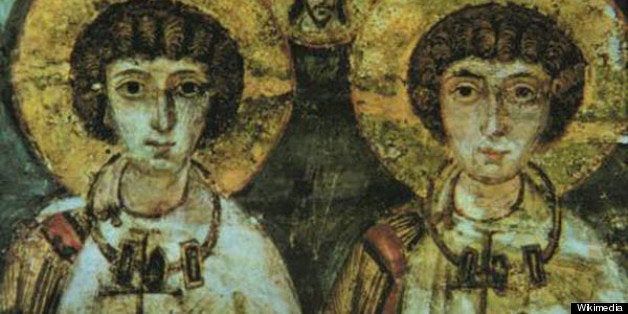
The surprising claims of a respected historian regarding the ancient Christian church's stance on gay marriage sparked controversy recently in advance of a new publishing of the book that originally championed the claims.
John Boswell was an openly gay, Catholic historian and professor at Yale University. A good period of his career involved advocating that the early Christian church often conducted ceremonies joining two men together in ritualistic unions.
In 1994, the year before he died, Boswell published Same-Sex Unions in Premodern Europe, his strongest defense of this theory. The very first digital version of that book is slated to be published at the end of August.
Perhaps because of this fact, Boswell's work has garnered fresh attention in the media. However, his controversial work has for years shown up in discussions of homosexuality in religion, according Fordham University's overview of Boswell's career. His ideas gained instant widespread recognition after they were cited by a character in the popular syndicated cartoon strip "Doonesbury." As a result, at least four papers dropped the strip in protest, according to Slate.
Much of Boswell's most controversial research featured the academic's discovery of more than 60 texts -- dating back to the 8th century -- that described ceremonies the historian said were essentially "same-sex unions."
In a 1994 New York Times review of Boswell's book, Peter Steinfels writes that the picture painted by Boswell is both a fascinating and complex one:
There is no question that Professor Boswell has found records of ceremonies consecrating a pairing of men, ceremonies often marked by similar prayers and, over time, by standardized symbolic gestures: the clasping of right hands, the binding of hands with a stole, kisses, receiving holy communion, a feast following the ceremony. Some of these ritual actions also marked heterosexual marriages, but there remained differences in both actions and words between the two ceremonies.
Of course, Boswell's theories had many critics at the time his book was published. One of his most well-known detractors may have been cultural critic Camille Paglia, who penned a caustic takedown of Same-Sex Unions in Premodern Europe for The Washington Post in 1994.
"Boswell's treatment of the Middle Ages, ostensibly his specialty, is strangely unpersuasive," Paglia wrote. "Indeed, he seems grotesquely incapable of imagining any enthusiasm or intimate bond among men that is not overtly or covertly homosexual. ... The cause of gay rights, which I support, is not helped by this kind of slippery, self-interested scholarship, where propaganda and casuistry impede the objective search for truth."
However, Boswell argued that while ancient same-sex marriages were sometimes facilitated based on financial, rather than sexual, rationales, his research showed that many of these unions were similar to contemporary same-sex weddings, according Annalee Newitz of io9.
Boswell died months after the publication of Same-Sex Unions in Premodern Europe, which would become his most famous book. The debate sparked by his research is ongoing. Ultimately, Boswell's work showed that "[e]ven the most fundamental kinds of human relationships change over time," Newitz writes. "Those who have been banished today may be blessed tomorrow -- just as they were over a thousand years ago."
(Hat tip, Queerty)
